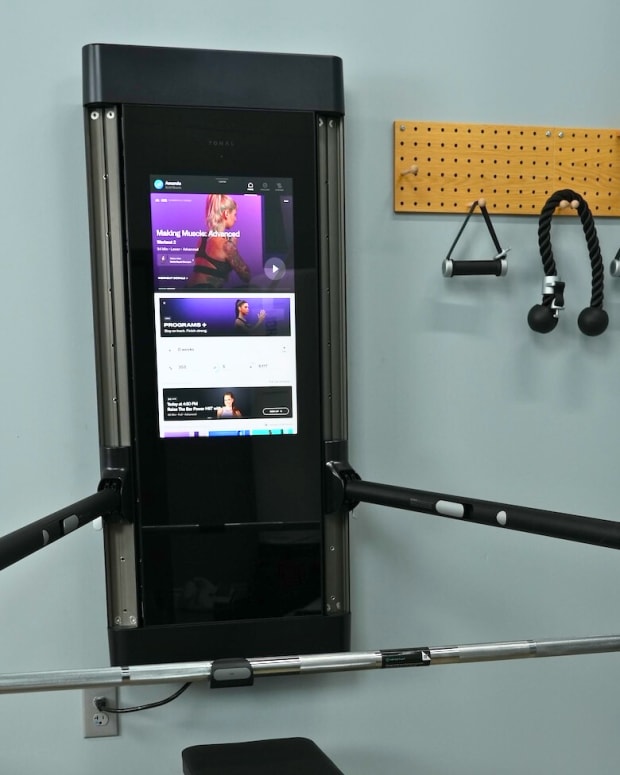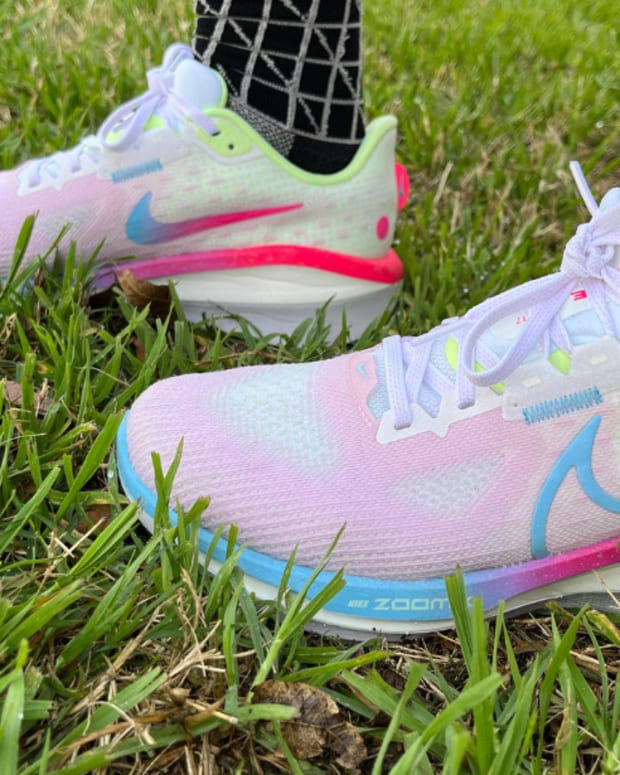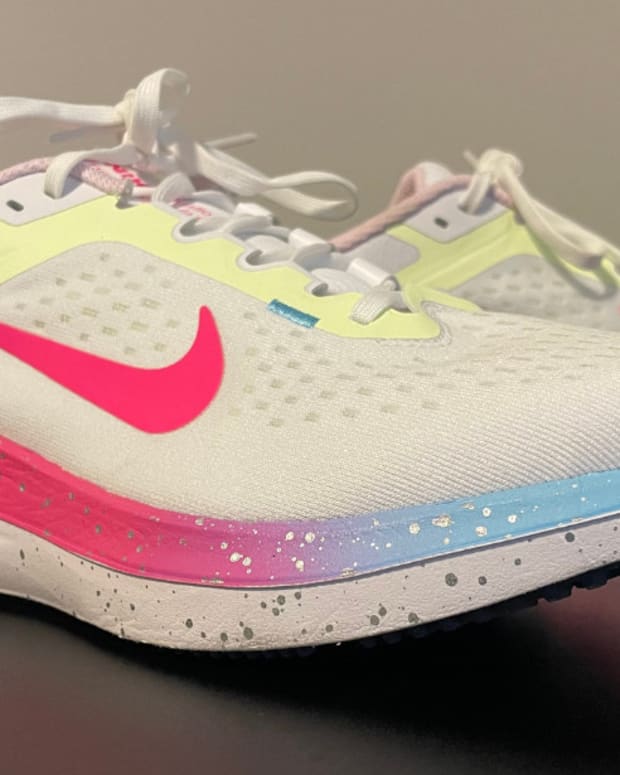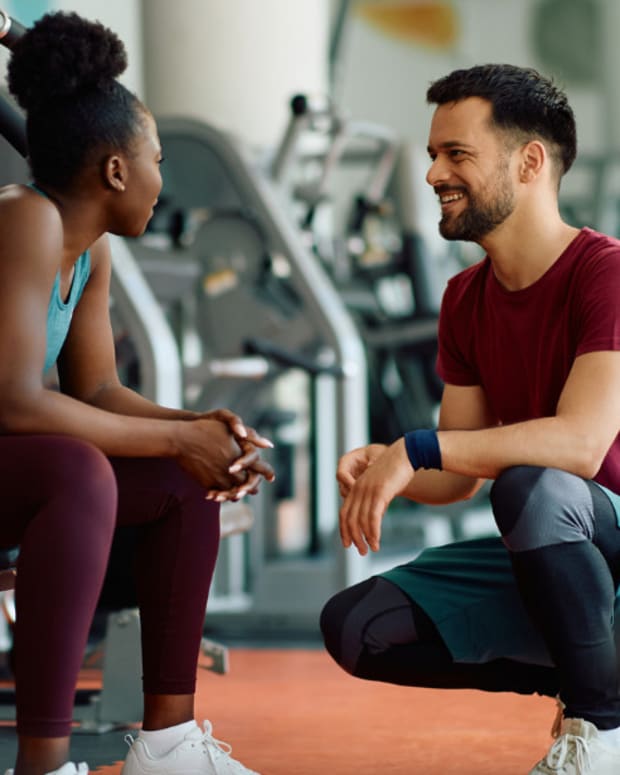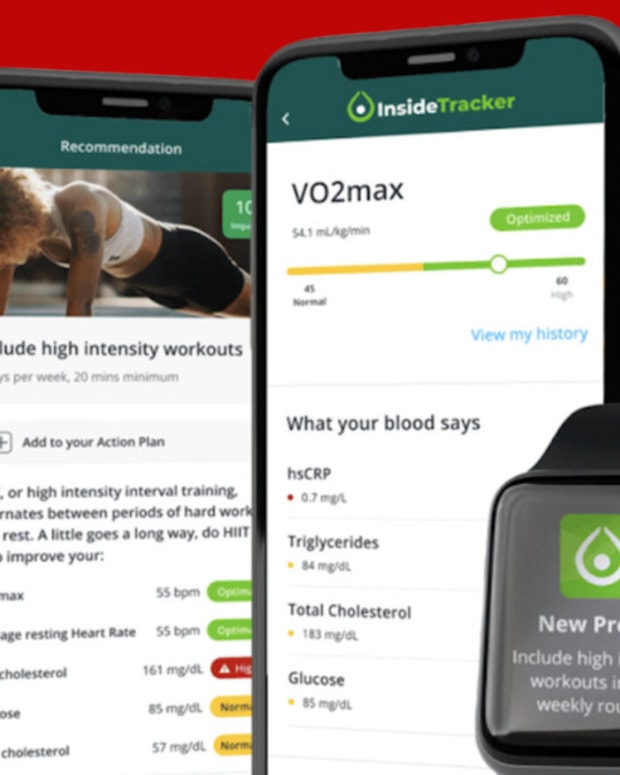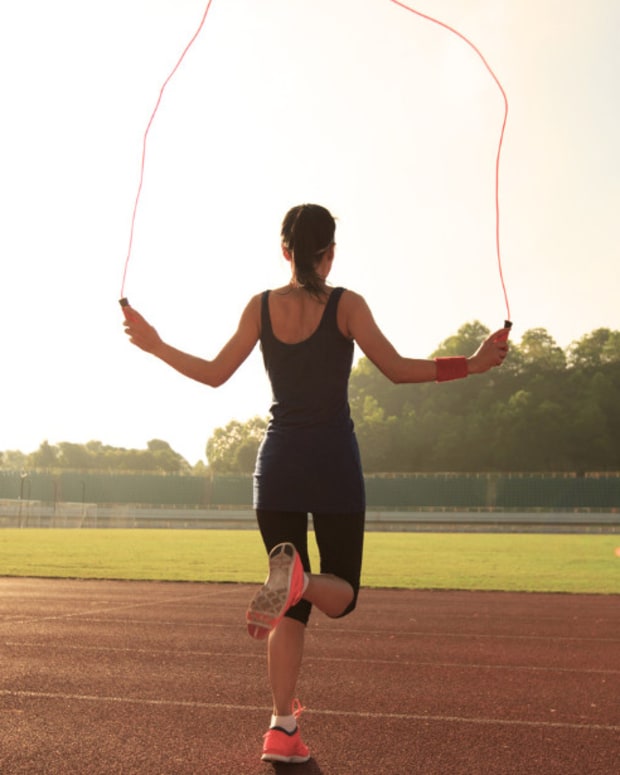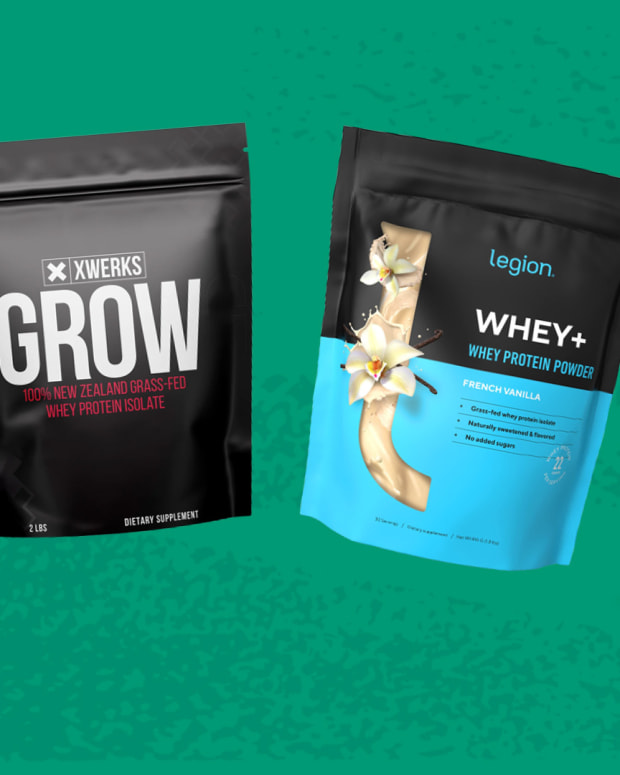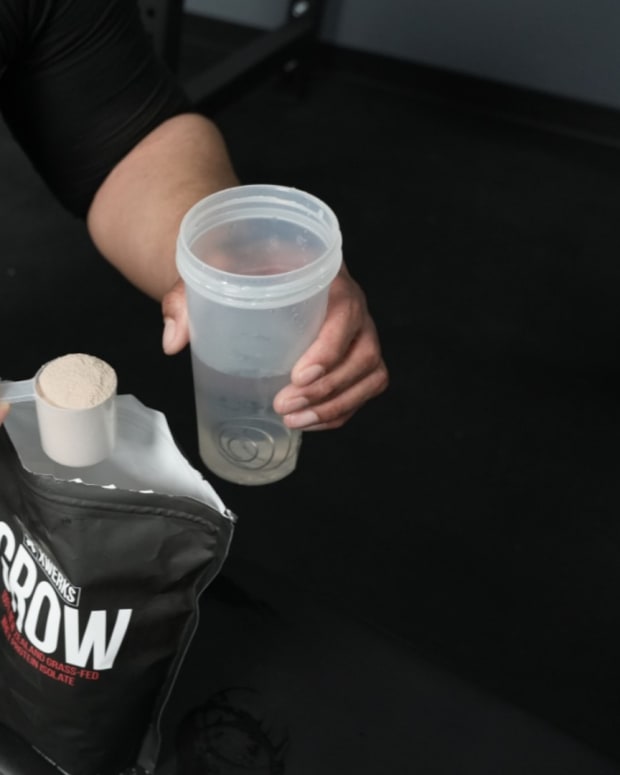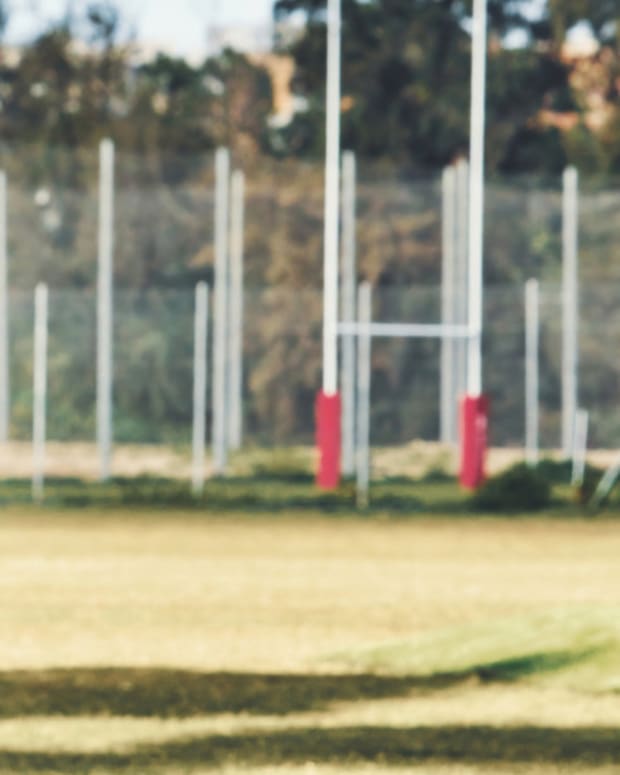The products featured in this article have been independently reviewed. When you buy something through the retail links on this page, we may earn commission at no cost to you, the reader. Sports Illustrated editorial staff are not involved in the creation of this content. Learn more here.
Excellent coordination, quick reflexes and optimal endurance are just a few of the important elements that make up a great tennis player. However, what’s almost equally important is the equipment you use on the court. While tennis gear like racquets, shorts, shirts and tennis skirts are pretty universal, any pro tennis player will tell you that the right shoes can make a world’s difference. Great shoes help with complicated footwork and keep you feeling fresh from match to match, all while preventing injuries.
With so many shoes to choose from, finding the right pair for your playing style and foot shape can be a challenge. Luckily, we’ve put in hours of research to craft a list of the best tennis shoes on the market based on characteristics like durability, affordability, style and comfort. Here, we’ll take you through this list of top-tier tennis shoes, as well as our guide to finding the best tennis shoe for to hit the court.
Our Picks for the Best Tennis Shoes:
- Best Tennis Shoes Overall: adidas Adizero Ubersonic 4.1
- Best Tennis Shoes for Wide Feet: Kuru Quantum
- Best Tennis Shoes for Men: NikeCourt Air Zoom Vapor Pro 2 Men’s
- Best Tennis Shoes for Women: NikeCourt Air Zoom Vapor Pro 2 Women’s
- Best Tennis Shoes for Walking: Allbirds Tree Flyers 2
- Best Tennis Shoes for Flat Feet: NoBull Trainer+
- Best Affordable Tennis Shoes: adidas CourtJam Bounce
- Best Tennis Shoes for Clay Surfaces: adidas Adizero Ubersonic 4 Clay Court Tennis Shoe
- Best Barefoot Tennis Shoes: Xero HFS II
Best Tennis Shoe Overall: adidas Adizero Ubersonic 4.1
Key Features:
- Price: $140
- Lightweight design
- Lightstrike midsole for cushioning and on-court responsiveness
Best For:
- Players who play and practice on hard courts
- Players who want a more durable shoe for long matches
Whether you’re just beginning your tennis journey, are already an avid player or just want a pair of shoes that you can wear from the court to the streets, the adidas Adizero Ubersonic 4.1 shoes are a great choice. These newly updated shoes are lightweight and designed to support quick, lateral movements to help you excel in tennis matches. The cushioned Lightstrike midsole keeps you reactive and comfortable on the court.
The Adizero Ubersonic 4.1 comes with a grippy outsole to provide traction that withstands long matches. It’s also equipped with an Adituff abrasion zone for increased durability and protection so you can slide hits and land easily after an overhead smash.
Made with a lightweight, breathable upper, this shoe is designed to keep your feet cool on hot days and in stuffy indoor facilities. It is also made with 50 percent Parley Ocean Plastic, or repurposed plastic waste found in the ocean, and 50 percent recycled polyester so that you don’t have to feel bad about your purchase.
Pros:
- Grippy outsole
- Breathable upper
- Made with recycled materials
Cons:
- A bit expensive
- Not great for toe draggers
Best Tennis Shoes for Wide Feet: Kuru Quantum
Key features:
- Price: $165
- Wide toe box
- Kurucloud midsole
Best for:
- Players who have wide feet
- Players who want a flexible upper
The Kuru Quantum shoes are furnished with our wide-footed friends in mind, as you can order this shoe in both regular and wide sizing.
The Quatums also feature robust arch support to prevent your foot from overpronating, while the cushy Kurucloud midsole absorbs the shock of all your nimble court movements. No worries about sweaty feet throwing you off your game, the breathable mesh upper is designed to help keep your feet crisp.
We will note that the shoe is a tad heftier than some of its counterparts at 10.5 ounces, that extra weight adds a nice stable feel. The only downside to this shoe is that the wide model of the shoe could be a bit too wide for some players.
Pros:
- Superior comfort
- Excellent traction
- Flexible upper
Cons:
- Relatively heavy
- The heel box can be too wide for some players
Best Tennis Shoes for Men: NikeCourt Air Zoom Vapor Pro 2 Men’s
Key features:
- Price: $120
- Zoom Air Cushioning
- Herringbone outsole for optimal grip
Best for:
- Players who want an all-around shoe
- Players who want a low-cut design
With careful attention to comfort and design, the NikeCourt Air Zoom Vapor Pro 2 shoes are designed to allow you to run swiftly back and forth across the court without suffering from aching feet. These shoes come injected with Nike’s Zoom Air cushioning, reducing pressure on your foot as you land hard. The cushioned midsole gives you extra support without adding any additional weight.
The outer foot frame helps keep your whole foot stabilized, and the outside has a durable, reinforced mesh that is breathable and adds extra support. The herringbone outsole helps you grip the court while maintaining your ability to slide.
Compared to most high-end tennis shoes, the Air Zoom Vapor Pros are relatively affordable. The design helps it cling to your foot so your heel doesn’t slide around and the rubber has been removed from low-wear areas to reduce the weight.
Related Post: The Best Nike Shoes for Men
Pros:
- Grippy herringbone pattern
- Breathable materials
- Shock-absorbing cushion
Cons:
- Not the best support
- May be too narrow for some players
Best Tennis Shoes for Women: NikeCourt Air Zoom Vapor Pro 2 Women’s
Key features:
- Price: $120
- Zoom Air Cushioning
- Herringbone outsole for optimal grip
Best for:
- Players who want a durable, cushioned shoe
- Players who want a low-cut design
The NikeCourt Air Zoom Vapor 2 is our choice for the best tennis shoes for women. The low-to-the-ground design keeps you stable during fast-paced play. As a bonus, these tennis shoes come in at a lower price-point than other high-end tennis shoes.
These shoes are made with a stretchy sleeve to help the shoe cling to your foot, keeping your heel in place as you run around the court. In this version, the rubber has been removed from low-wear areas to reduce the weight. Note that these shoes are designed for hard-court surfaces.
Pros:
- Reviewers say these are also great shoes for pickleball
- Breathable mesh to keep your feet cool
- Cushioned midsole for support
Cons:
- Runs small, so you may need to size up
Best Tennis Shoes for Walking: Allbirds Tree Flyers 2
Key features:
- Price: $160
- State-of-the-art stitching
- Bouncy SwiftFoam midsole
Best for:
- Players who want an everyday shoe plus tennis shoe
- Players who want impact protection
It’s easy to love Allbirds thanks to the company mission. The New Zealand–born founder wanted to incorporate sustainable wool into footwear. The staunch commitment to sustainability is a reason why you’ll see natural, non-synthetic materials in the Tree Flyers 2, which come in an array of colorful, eye-catching designs and classic neutrals.
Allbirds Tree Flyers are one of the most cushioned, responsive Allbirds shoes. The proprietary SwiftFoam midsole is highly responsive, helping you keep your game swift and steady with every step. You also get lots of shock absorption to protect your knees. Our tester said the shoes are lightweight, but with deep lugs that make the outsole feel grippy and stable.
The only downside to this more casual tennis shoe is that it’s built a bit heavier than some of the other more competition-oriented brands. Of course, sometimes you sacrifice lightweight functionality for cushioning, and you just have to go with it. Other than that, these are top-notch on-and-off-the-court shoes.
Pros:
- Comfortable plush cushioning
- Very stable
- Supportive midsole that’s sustainably manufactured
Cons:
- Narrow feet may have too much wiggle room
Best Tennis Shoes for Flat Feet: NoBull Trainer+
Key features:
- Price: $139
- Wrap-around tongue design
- Reinforced arc
Best for:
- Players who want a solid hardcourt tennis shoe
- Players who want a tennis shoe with a lockdown fit
The NoBull Trainer+ is a versatile tennis shoe fit with enough support to swaddle flat fleet without overwhelming your ability to stay agile on the court. The shoes use breathable materials that moderately pad the heel and collar. A sock liner hugs your foot’s form for extra security, and a carbon rubber outsole adds durability for any court conditions.
Plus, the roomy toe box leaves space for custom orthotics, if your flat footedness is extreme enough for further intervention.
Related Post: Is the Versatile NoBull Trainer the Right Shoe for You?
On NoBull’s website, reviewers’ main critique is that the trainers take some time to break in, but they add that it’s worth the wait. Other than that, if you suffer from flat feet and haven’t been able to find the right shoes for flat feet to give you the support you need, your search can stop here.
Pros:
- Suede tongue soothes the foot while still breaking the shoe in
- Tons of support and stability
- Breathable materials
Cons:
- Less midsole cushioning than some other shoes designed for flat-footedness
- Narrower toe box makes Trainer+ less ideal for wide feet
Best Affordable Tennis Shoes: adidas CourtJam Control
Key features:
- Price: $90
- Hybrid tread pattern
- Bounce midsole technology
Best for:
- Players who want a multi-surface shoe
- Players who want plenty of foot protection
Whether you play regularly at a club or recreationally on the weekends, you can enjoy all of the benefits of this budget-friendly tennis shoe. The adidas CourtJam Control comes with plenty of cushioning, breathable materials and a supportive sole.
One of the main reasons we love this shoe is that it can be used on several court surfaces, making it one of the most flexible shoes on the list. It’s super lightweight and provides a surprising amount of protection with quality synthetic materials.
We can’t ignore adidas’ trademark Bounce technology, which helps add a bit more pep to your midsole, thanks added cushioning. You’ll feel comfortable on your feet, even after pounding around the court for a few hours.
The only minor downside we could think of with these shoes is that reviewers say the toe box may be a bit too roomy depending on the shape of your foot, which could make the shoes slightly uncomfortable for those with smaller feet.
Pros:
- Outstanding ankle protection
- Excellent support
- Affordable
Cons:
- Toe box is roomy
- Lacks serious durability
Best Tennis Shoes for Clay Surfaces: adidas Adizero Ubersonic 4 Clay Court Tennis Shoes
Key features:
- Price: $140
- Primeknit coverage
- Lightstrike midsole
Best for:
- Players who want a shoe that gels with their aggressive playing style
- Players who want tons of bounce
The adidas Adizero Ubersonic 4 Clay Court Tennis Shoe is one of the best clay court shoes around, great for aggressive players who play with speed and need a shoe that’s responsive. It features the premium Adizero Ubersonic design an Adiwear outsole designed specifically for clay courts. You get plenty of bounce with the new Lightstrike midsole and total flexibility with the knit mesh upper.
Even with its comfortable design, the clay court outsole provides a close-to-the-ground feel that’s more responsive than previous iterations of the shoe.
Outdoor summer players will enjoy the breathable Primeknit coverage, which provides a form fit without a claustrophobic feel. It never feels stiff or inflexible.
The one downside to this shoe is the toe box, which is a bit tighter than we’d like it to be. However, that’s a small price to pay for an otherwise outstanding tennis shoe.
Pros:
- Responsive midsole
- Straight-from-the-box comfort
- Lightweight design
Cons:
- Tight toe box
Best Barefoot Tennis Shoes: Xero HFS II
Key features:
- Price: $119.99
- Zero millimeter drop
- Natural fit and feel
Best for:
- Players who wish they could play barefoot instead
- Players who need minimal arch support
One of our barefoot shoe enthusiasts on the team tested the HFS IIs, and said that they performed well for active sports, giving him added endurance thanks to their light weight. The shoes also provide reliable traction on a myriad of indoor and outdoor surfaces, so you can trust the shoes on grass, clay or concrete courts.
The sportiness of the shoes, despite their minimal-style build, was echoed by other wearers. Verified buyer “Dawson T.” wrote on Xero’s website that the shoes are “great for stop and go sports like tennis or pickleball,” adding that the shoes distinguish themselves from other barefoot shoes by how sturdy they feel.
The brand states that while the sole on the HFS II “looks thick,” you can rest assured the shoe has that barefoot feel and flexible sole that Xero is known for. Also like fellow Xero models, the shoe comes with a lengthy 5,000-mile sole warranty.
Pros:
- Lightweight
- Tons of grip
- Flexible sole
Cons:
- May not offer enough support
How to Choose the Best Tennis Shoe for You
Fit
One of the most important aspects of your tennis shoes is the fit.
With a good fit, your shoe will feel secure around your foot, providing you with stability and grip on the court. There are a few things you’ll want to look for when determining whether or not your shoes fit well.
For starters, you’ll want to note the feel in the forefoot. You should have a slight bit of space just in front of your big toe. The space should be half an inch at most. This additional bit of space provides wiggle room as you move around during longer games. If the forefoot is too tight, you risk swelling.
Consider the width of your foot too. Most tennis shoes are fairly narrow, though those who manufacture wide shoes often mark it in the specs, so we recommend looking out for that wide marking if you don’t have narrow feet.
Next, you should look at the mid-foot. This area should feel firm on foot, acting somewhat like a brace to give you side-to-side stability.
Lastly, get a feel for the heel. This area should also feel locked in. You don’t want your heel to move around in your shoe, as it could cause blisters.
Related Post: The Best Training Shoes
Style
Consider your playing style when picking the best tennis shoes. While there are plenty of playing styles, we often like to segment shoe types into three categories:
- Stability
- Speed
- Comfort
The category you prioritize will have a lot to do with your preferences.
Shoes that prioritize stability are great for the average player. Stability is something your muscles will have to take time to develop when playing tennis. Shoes built for stability can help you develop this much more quickly.
Note that stability is often correlated with weight, so you’ll find that these shoes tend to be on the heavier side. They come with supportive features on the uppers, such as TPU overlays, and an abundance of embedded support structures to stabilize the feet.
For example, you may look for shoes with a midsole shank if stability is something you’re concerned about.
Next, we have shoes that are built for speed. These kinds of shoes are great for aggressive players who prioritize agility. Out of these three categories, these types of shoes are the lightest.
You’ll find minimal and flexible designs on the upper, helping you to flex the foot more efficiently. The midsole will deliver a close-to-the-court feel with slightly less cushioning to refrain from bogging the player down.
Note that the lightweight materials and design are often less durable compared to stability-style shoes.
Lastly, we have shoes that prioritize comfort. These types of shoes are excellent for players who like to move around the court a lot. Expect thick, bouncy cushioning and a super durable outsole.
The one main downside to these shoes is that they don’t support the best agility.
Foot Type
Your foot type can have a major impact on the type of shoe that you choose to play with. If you don’t know what type of foot you have, you can use a “wet test” to make a determination.
Wet your foot in a bit of water and step down onto a dark piece of construction paper. Your wet foot should make an imprint on the paper, telling you which of the three foot types you have:
- Overpronation
- Neutral
- Underpronation
You’ll know you have overpronation if you see a complete imprint of your foot. Overpronators have the habit of rolling their foot inward on strides, meaning having stable shoes is wildly important.
If you have moderate space in the arch, you have a neutral foot type. The beauty of neutral feet is that just about any type of tennis shoe should work for you.
If you find a large, open space on the arch, then you have a supination. Supinators often roll their feet outward during strides. The best shoe to remedy this problem is an ultra-flexible shoe that alleviates shock during fast, lateral movements.
Court
Most manufacturers categorize their shoes based on the type of court they are made to play on. You’ll often choose between hardcourt shoes and clay-court shoes. However, if you’re new to tennis, we recommend checking out all-court trainers, as these are good for different court styles.
Hardcourt tennis shoes are made for acrylic-covered asphalt or concrete courts. These courts are much tougher than clay courts, providing more traction and supporting faster playing styles. With that said, they can be hard on the shoes and even harder on your feet and body.
Related Post: The Best Tennis Shoes for Knee Pain
If you’re planning to play on a hard court, look for a shoe with a multi-directional tread pattern, as it’ll provide ample grip and sliding. Plus, this tread pattern is very durable, and will hold up much longer than your average full herringbone lug pattern.
The mid-sole should have more comfort to protect your feet from the harshness of concrete. If you’ve ever played long, aggressive matches on concrete, you know exactly what we mean.
Lastly, check for solid upper materials. While lightweight, flexible materials seem to be all the rage right now, they don’t provide as much stability, which is a necessary factor on hard courts.
Clay-court tennis shoes are made for shale, stone, or crushed brick courts. These courts are much softer than concrete or asphalt courts, making for slower games. While they are easier on the body and feet, they don’t provide as much traction, meaning outsole grip is crucial.
Look for a herringbone lug pattern. This unique traction pattern won’t collect dust resting on the top of the court, allowing for better sliding and greater traction.
Mid-soles on clay court shoes often have less cushioning, as the softness of the court makes up for it. They are also often lighter, as they don’t require super durable materials to hold up on the hard surface.
Uppers should definitely feel tighter to prevent your ankle or foot from rolling. A snug fit is essential.
Lastly, you have all-court shoes, which are strictly for recreational playing. The beauty of these shoes is that they can be used on hard courts and clay courts, as they have hybrid sole patterns that can adapt.
The mid-sole will depend entirely on the model. The same goes for the upper. Your best bet is to find shoes that fit your style and comfort needs.
Though they are pretty rare at this point, if you ever plan on playing on a grass court, make sure your outsoles are built for it. This surface is very soft, similar to clay, though it plays fast. You’ll want to get a tennis shoe with “nubs” on the outsole. These nubs are very similar cleats, though much smaller.
They provide excellent grip for quick players. Just note that you should never use this type of outsole on other surfaces.
Color
The color of your shoes will be totally up to you! White shoes have definitely become the norm for tennis players, though many players (pros and casual players) are starting to look for shoes that express their style.
Of course, neutral colors will go with everything you wear, which can be ideal if style is important to you, so that’s certainly something to consider.
When to Wear Tennis Shoes
Walking
Tennis shoes are great for casual use walking shoes, though make sure you’re wearing the right tennis shoes if you’re going to wear them around each day.
For starters, we recommend refraining from wearing ultra-lightweight tennis shoes every day, as they don’t provide as much cushioning and support. You’ll have a lack of protection, comfort and shock absorption.
Playing tennis
Is it obvious enough?
Once you’ve found the right tennis shoes for your game, make sure to check out our list of the best tennis rackets to optimize your game!
Best Tennis Shoes FAQs
Can I wear running shoes for tennis?
We don’t recommend running shoes for tennis for a few reasons:
- They don’t provide much protection from toe dragging
- They don’t offer high levels of lateral support
- They don’t provide ample tread patterns for sliding and gripping
- Outsole durability isn’t as strong
Can tennis shoes be used for walking?
Absolutely! We just recommend getting a pair of tennis shoes that are cushioned and have plenty of support.
Related Post: Best Walking Shoes for Comfort and Fitness
How long do tennis shoes last?
If you’re using your tennis shoes every day, they should last for a few months before you have to buy a new pair. Shoes will last slightly longer if you play on clay courts versus hard courts.
What's the difference between tennis shoes and sneakers?
Tennis shoes are specialized footwear designed for speed, agility, support and comfort on the tennis court. You can wear tennis shoes both on and off the court. Sneakers, on the other hand, are casual shoes with rubber soles and casual topping, often made of canvas or other solid materials. These are not meant to be worn on courts, as the rubber outsole can be damaging.
Final Thoughts
With the rise of sports like tennis and pickleball, there are more shoe options for players than ever before.
Finding the perfect tennis shoes doesn’t need to be a challenge, as long as you have all of the right information. The shoes listed above are tried and true options, great for beginners, weekend warriors and pros alike.
Don’t rush the process, and we guarantee you’ll find the perfect shoe to optimize your game.
Prices are accurate and items in stock as of publish time.










